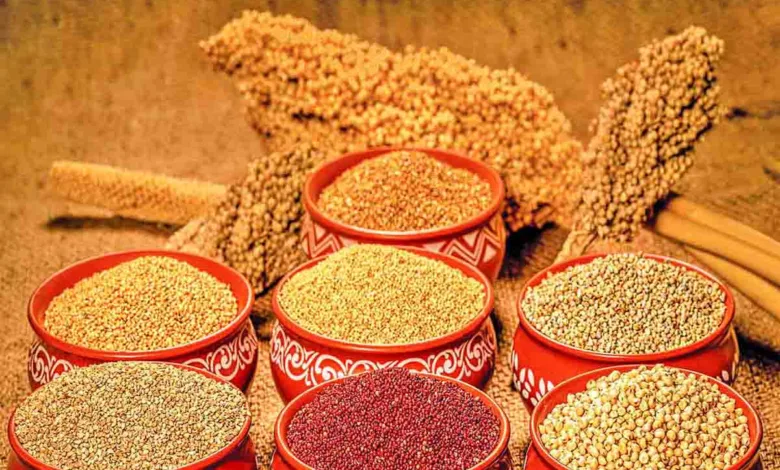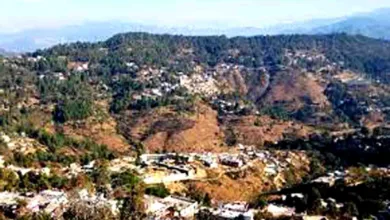Millets not poor man’s food anymore, better than wheat & rice

Monday, 19 June 2023 | Dr B KS Sanjay
GUEST COLUMN
 Dr B KS Sanjay
Dr B KS Sanjay
Based on India’s proposal the year 2023 was declared as International Year of Millets (IYM) by the United Nations General Assembly. Under the leadership of Prime Minister Narendra Modi, the celebration of IYM 2023 has become a people’s movement and has positioned India as the global hub for millets.
The author was born in a village of Bundelkhand which has a dry and arid climate. Bundelkhand is historically known as a drought prone region of the country but as the climate is changing, the frequency and intensity of drought has increased in the past two decades. The incidence of recurrent drought is well known in the region where the ground water level goes further deep down. The ponds, hand pump, borewells and tubewells- all have become dry. The region is a gently sloping upland distinguished by barren hilly terrain with sparse vegetation especially in river ravine areas where the climate is dry and arid.
Usually, two crops- kharif and rabi are harvested in a year and these are dependent on rain fed water. Crops like rice do not survive in drought prone areas. The millets like jowar and bajra are the common crops in kharif, pulses and mustard are the common crops in rabi in Bundelkhand. Jowar-bajra porridge and flatbread are cooked in most of the houses. They are the staple food of the people. The porridge is usually eaten with milk or butter milk and flatbread with dal and vegetables.
Millets are grouped in cereals that commonly come under the grass family. Millets grow in harsh climate and survive in less fertile soil, that is why millet crops do not need much water, fertilizer and pesticide because of their genetic composition and physical structures like small size and hard outer coat.The millets are divided into two categories-large and small size. Large millets are popular and commonly cultivated and consumed. Large millets, which are the most popular include sorghum (jowar), pearl millets (bajra) and finger millets (ragi, mandua). Small millets are barnyard millets (jhangora), proso or broomcorn millets (barri, chena), buckwheat millets (Kuttu), kodo millets (kodra), foxtail millets (kangni) and amaranthus (chaulai). Millets are coarse grains that have been traditionally grown and consumed in the Indian subcontinent for about 5,000 years. They are tagged as “poor man’s food grains” because they are grown in underdeveloped areas and were usually eaten by poor people as a staple food. The author himself consumes porridge or flatbread made of one of the millets (jowar, bajra, ragi) by rotation six days a week.
Here one would like to narrate a story. I have worked and lived in Riyadh, Saudi Arabia for many years. One day when I went to buy wheat flour I saw sacks of jowar in a shop. When I showed interest in buying jowar, the shopkeeper asked me if I had camels. I questioned why he asked that and he replied that this is camel feed. When I told him that I had eaten porridge and flatbread of jowar in my childhood till I lived in my village the shopkeeper could not believe it and was amazed to know that jowar is eaten by humans in India. He thought that jowar is used only as cattle fodder.
I have worked and lived in Riyadh, Saudi Arabia for many years. One day when I went to buy wheat flour I saw sacks of jowar in a shop. When I showed interest in buying jowar, the shopkeeper asked me if I had camels. I questioned why he asked that and he replied that this is camel feed. When I told him that I had eaten porridge and flatbread of jowar in my childhood till I lived in my village the shopkeeper could not believe it and was amazed to know that jowar is eaten by humans in India. He thought that jowar is used only as cattle fodder.
The consumption of millets can help in maintaining good health of the individuals and its production can help in increasing the earning of farmers especially in drought prone areas of Uttar Pradesh, Madhya Pradesh, Uttarakhand, Rajasthan, Gujarat, Karnataka, Maharashtra, Tamil Nadu and Andhra Pradesh. Traditionally, these States have been producing the maximum quantity of millets (98%).India is the largest producer of the millets which accounts for more than half of the world production. African countries are the other producers and consumers of the millets. The areas which are not developed in the agriculture sector are still producing and consuming the millets.
The troika of health, education and nutrition (HEN) is the basic pillars of an individual and of the nation. Health is not only an asset but also a resource which must be nurtured by all. It is a fundamental need of any individual and every body should be health conscious. One should always take care of themselves in order to remain healthy. To achieve good health one can follow the acronym DEWS: Diet, Exercise, Work and Sleep.
It is said in our scriptures, Annam Vai Pranam which means food is life. Diet plays a vital role in maintaining good health. Most lifestyle diseases like diabetes, hypertension, coronary artery disease, atherosclerosis, hyperlipidemia and many other diseases are linked with bad food habits. Millets are a good source of energy, protein, fibre, minerals like copper, magnesium, manganese, potassium, zinc, selenium, many other micro nutrients and antioxidants. Consumption of millets can not only supply energy but also the essential micro nutrients needed for maintaining good health by improving the immunity. Overall millets are better than wheat, rice and maize.
It is a well known fact that fruits like berries and cherries which are grown in harsh environments like extreme cold are good for health. The millets from dry and arid land also give the same advantages as berries and cherries. Millets are considerably cheaper than berries and cherries.
A food festival organised by MCD in New Delhi at Talkatora Stadium had food made with millets and was a success story, similar to the millets festival held in Mumbai in February 2023. According to an official report the popularity of the millet delicacies was more than expected. Similar food festivals will be held during G20 summit 2023 during September 9-10 at Pragati Maidan. Traditionally, porridge and flatbread are cooked with the millets but new recipes are coming up in this international year of millets which was evident in the global millets (Shri Anna) conference in Delhi in March this year.
Once tagged as the poor man’s food, millets are increasingly finding their way into dinner plates across the world. Regular consumption of millets will not only help to maintain the physical health of the individuals but more production will help to improve the financial health of the farmers particularly of marginal farmers living in under developed dry and arid areas. This initiative will be a game changer in the future not only in health, food and agriculture sectors but in other related sectors as well as all over the world because 97 per cent of millet production happens in developing countries.
(A Padma Shri recipient, the author is an orthopaedic surgeon. Views expressed are personal)






